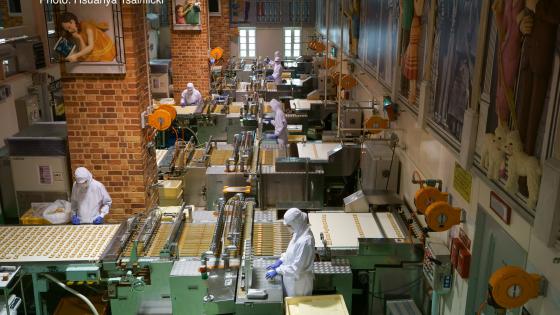There is a crisis in media and journalism, and policymakers have to tackle both political and commercial influence in the media.
Political bias has been thoroughly analysed in the economics literature, but commercial bias has received markedly less attention than it deserves. For decades, commercial interests delayed public awareness of tobacco health risks; health risks went essentially unreported in the mainstream press (Baker 1994; Bagdikian 2004) and the public health literature provides systematic evidence on the role of tobacco advertising.
Reporting on climate change and its causes suffered similar delays (Boykoff and Boykoff 2004; Boykoff 2008; Oreskes 2004). More recently, some critics are suggesting that business interests (especially of insurance and pharmaceutical companies) are impeding an informed and balanced media debate on healthcare reform in the US. Others claim that a truly independent media could have helped to avert or mitigate the current financial and housing crises. A more general criticism is that media 'dumbed-down', substituting hard news with soft news, such as personal, emotional and celebrity stories (as documented in Hamilton 2004).
In a recent article, we show how advertising can seriously interfere with the quality, accuracy, and breadth of content and programming in the media (Ellman and Germano 2009). Biased content is most likely when competition amongst media outlets is limited or when advertisers are large and can threaten to withdraw their advertising business from the media. The analysis extends to media dependence on any business or state actors that can substantially affect media company profits.
Analysing the delicate interaction between advertisers, financiers, media outlets, and media audiences within a two-sided markets framework generates new insights for policymakers. Our work points to the need for independent media and makes the case for promoting competition and public funding.
Mechanisms of influence
There are two basic mechanisms, beyond direct ownership, through which businesses can distort media reporting. First, the media earn a share of advertising surplus and can therefore benefit from making advertising more effective. Frequent reporting on cancer lowers returns to tobacco advertising. Reports linking carbon emissions to global warming may put off viewers from buying fuel-intensive cars. Relaxing and dumbed-down programme content appears to enhance most types of television advertising.
How far these advertiser preferences influence media outcomes depends on the structure of the media and advertising markets. There is a subtle interaction between the two sides – advertisers and readers – of media markets: even if all advertisers want the same distortion, increased advertising can actually reduce distortions, because the growing advertising surplus leads newspapers to compete more intensely for each reader. This result provides strong support for regulation to maintain competition.
Second, large advertisers can influence even competing media outlets by threatening to withdraw their advertising; numerous small advertisers can exert influence if they share a common interest and can coordinate (e.g., when represented by an advertising agency). As a result, media competition alone is not always sufficient to prevent commercial media bias.
Trends and current media difficulties
The global financial and economic crises have taken away attention from another crisis – the crisis in media and journalism which pre-dates the others and is now deepening and accelerating. Important newspapers around the world have been shutting down, while others file for bankruptcy or are on the verge of doing so. US newspapers have been particularly hard hit – a recent Pew study shows that 15,000 US journalists lost their jobs in 2008. The European Federation of Journalists warns of similar concerns in Europe (Phillips, 2009). Given the vital importance of the media, this problem deserves urgent attention.
The simplest response to media collapse – allowing media companies to merge – is unwise. Some media economists disagree, but their view derives from focusing on ideological, especially demand-driven, bias, where market concentration is somewhat less of a concern. Our research underlines sharply the need to maintain vigorous competition. The hope that the internet by itself will save journalism is not convincing either. The internet presents significant threats as well as important opportunities. Websites permit individuals to reach potentially vast audiences, but there remain important fixed costs, such as in building and maintaining a reputation for quality and breadth. The combination of high fixed costs and minimal variable costs lead some experts to predict more severe market concentration in the mass audience segments than in traditional media.
So far, media providers on the web have had difficulty getting audiences to pay for news; both subscription and micro-payment models have mostly failed. Advertisers are concerned that internet users are less receptive to news-bundled online advertising, and newspapers have lost classified advertising to specialist websites like Craigslist. To add to the troubles, telephone and cable companies are now seeking to extract greater profits by charging content providers for audience access. Such departures from “net neutrality” are hotly contested. A strong form of net neutrality is necessary if the internet is to fulfil its greatest promise; that of a potentially immense diversity of sites that can be created and accessed by anyone from anywhere.
The future development of the internet remains an open question, but it is sobering to recall that the hopes for radical improvements from an earlier technological innovation – radio – went largely unrealised.
Policy recommendations
Our analysis points to two types of policy response. First, it reiterates the importance of regulating for vigorous competition in media markets. Second, it calls for public funding of informative media as a public good, with designs that aim for maximal editorial independence.
The independence challenge is not unlike that faced by central banks. It is more complex and will require ongoing attention to rules and mechanism design, but creating a wide range of media alternatives at least guarantees a diversity of types of bias.
Some options include:
- creating national endowments for journalism and media to ensure long-term financial independence
- allocating funds to content-providers as a function of audience and/or via a range of voting mechanisms
- expansion of the public broadcasting model to provide space and visibility for these outside content-providers
- subsidising investigative reporting (at the local, national, and international levels) as well as professional training for journalists
- subsidising media infrastructure (see e.g., Obama and Gordon Brown’s commitments to breach the digital divide)
- removing advertising from public TV stations, as imminent in France and Spain. This reduces commercial bias of their content and pressures their competitors to reduce bias; it also shifts ad revenues to private media, complementing plans to subsidise media consumption and media entry.
Ackerman and Ayres (2009), Cohen (2009), and Lambert (2007) discuss these and related proposals in depth.
Doing nothing or reducing media competition (deregulating) in response to the current financial straits of our media is definitely the wrong answer.
References
Ackerman, B., and I. Ayres (2009), “A National Endowment for Journalism,” The Guardian, 31/08/2009.
Bagdikian, B.H. (2004), The New Media Monopoly, Boston: Beacon Press.
Baker, C.E. (1994), Advertising and a Democratic Press, Princeton: Princeton University Press.
Boykoff, M.T. (2008), “Lost in Translation? United States Television News Coverage of Anthropogenic Climate Change, 1995–2004,” Climatic Change, 86(1-2), 1-11.
Boykoff, M.T., and J.M. Boykoff (2004), “Balance and Bias: Global Warming and the US Prestige Press,” Global Environmental Change, 14(2), 125-136.
Cohen, J. (2009), “Reflections on Information Technology and Democracy,” Boston Review, 3 April 2009.
Curran, J. (2002), Media and Power, London: Routledge.
Ellman, M., and F. Germano (2009), “What do the Papers Sell? A Model of Advertising and Media Bias,” Economic Journal, 119, 680-704.
Hamilton, J.T. (2004), All the News that’s Fit to Sell, Princeton: Princeton University Press.
Lambert, R. (2007), “The Future of the News in the Digital Era,” Economic Affairs, June 2007.
Oreskes, N. (2004), “Beyond the Ivory Tower: The Scientific Consensus on Climate Change,” Science, 306, 1686.
Phillips, L. (2009), “Emergency Call on EU to Save Journalism,” EU Observer, 25/03/09.


